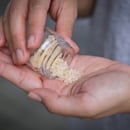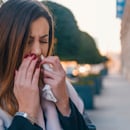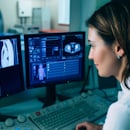
Coronavirus (COVID-19): Personal Protective Equipment
The number of people infected with the new coronavirus, COVID-19, continues to increase exponentially. The virus, first identified in Wuhan, China is from the same family of diseases that includes Severe Respiratory Syndrome (SARS) and Middle East Respiratory Syndrome (MERS). As of February 24, 2020, there are 77,794 confirmed cases of COVID-19 globally (World Health Organization [WHO], 2020).
Although persons with COVID-19 may be asymptomatic, most incidents show respiratory symptoms. In severe cases, the infection can progress to pneumonia and possibly death. COVID-19 acute respiratory disease is thought to be spread through droplets, contact, and fomites as SARS and MERS are.
To protect yourself and to prevent the spread of COVID-19, it is suggested you follow the recommendations for Influenza prevention:
- Avoid close contact with people suffering from acute respiratory infections
- Frequent hand washing (soap and water or alcohol-based hand sanitizers)
- Perform cough etiquette (maintain distance, cover coughs and sneezes with disposable tissues or clothing, and wash hands)
Specific recommendations to COVID-19:
- Wear personal protective equipment including a N95 mask with caring for patients
- Gloves
- Change gloves if they become torn or heavily contaminated.
- Remove and discard gloves when leaving the patient room, and perform hand hygiene.
- Gowns
- Use a clean isolation gown each time you enter the patient room.
- Change your gown if it becomes soiled.
- Remove gown and discard in the appropriate waste container before leaving the patient care room.
- DO NOT reuse gown.
- Respiratory Protection
- DO NOT use a standard facemask
- Minimal protection must be equal to that of a fit-tested NJIOSH-certified disposable N95.
- Disposable respirators are removed and disposed of after leaving the patient’s room. Perform hand hygiene after disposing of a respirator.
- Clean and disinfect reusable respirators.
- Eye Protection
- Eye protection, goggles, and a disposable face shield must cover the front and sides of the face.
- Put on goggles and a disposable face shield before entering the patient room.
- Remove goggles and disposable face shields before leaving the patient room.
- Clean and disinfect reusable eye protection prior to re-use.
- Discard disposable eye protection after each use.
- Clean and disinfect reusable eye protection prior to re-use.
- Gloves
- Environment infection control
- Use of dedicated medical equipment for patient care.
- Clean all non-dedicated, non-disposable medical equipment after each patient use.
- Adhere to consistent environmental cleaning and disinfection practices.
- Manage visitor access and movement.
- Screen visitors for symptoms of respiratory illness before they enter the facility.
- Restrict visitors from entering the room of a patient who is suspected of or has a known diagnosis of COVID-19.
- Provide instruction on hand hygiene and appropriate use of personal protective equipment.
- Visitors should not be permitted to remain in the patient room during aerosol treatments.
- Instruct visitors to limit their movement within the facility.
- Exposed visitors (contact with a COVID-19 patient prior to the patient being admitted) should report any signs and symptoms of an acute illness developing within 14 days of last known contact with the sick patient to their healthcare provider.
- Ensure all meats and eggs are cooked thoroughly
- Avoid travel to China
- (Centers for Disease Control and Prevention, 2020)
More information on donning and removing PPE can be obtained from the Centers for Disease Control.
The number of patients with a confirmed diagnosis of COVID-19 continues to climb and is reported daily by the WHO. You are encouraged to monitor the WHO website regularly to keep abreast of the most up-to-date information on this newest health risk. Additionally, continue to protect yourself by following your facility's hand washing policy and by donning the appropriate PPE as recommended by the CDC.
Using the appropriate PPE when providing care to a patient with a confirmed diagnosis of COVID-19 is your best protection from contracting the virus.
References
Centers for Disease Control. (2020). Interim infection prevention and control recommendations for patients with confirmed coronavirus disease 2019 (COVID-19) or Persons under investigation for covid-19 in healthcare settings. Coronavirus Disease 2019 (COVID-19).
World Health Organization. (2020). Coronavirus disease 2019 (COVID-19) Situation Report – 33.




